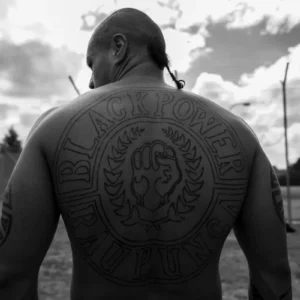(This article originally appeared here >>)
On January 25th, Fairfax blog Daily Life published an article by Jane Gilmore titled Fact or fiction: Every third victim of intimate partner violence is a male. The article was the latest in a series of attacks upon male victims of domestic violence by the publication.
This is the One in Three Campaign's in-depth response (a short version is here).
Men’s Rights Activists or advocates for male victims?
Ms Gilmore starts by referring to the One in Three Campaign as “A Men's Rights Activist website,” in what appears to be an attempt to smear the name of the Campaign within certain circles where the term “MRA” is used pejoratively.
If you check the Internet Archive of our website you will find we have never used this term as we don’t identify as MRAs. As our front page states,
One in Three is a diverse group of male and female professionals – academics, researchers, social workers, psychologists, counsellors, lawyers, health promotion workers, trainers and survivor/advocates. The Campaign aims to raise public awareness of the existence and needs of male victims of family violence and abuse; to work with government and non-government services alike to provide assistance to everyone affected by family violence; and to reduce the incidence and impacts of family violence on Australian men, women and children.
Attacks upon ABS data
Gilmore goes on to claim that our presentation of verified data from such organisations as the Australian Bureau of Statistics (ABS) and the Australian Institute of Criminology (AIC) is “straight up wrong,” “misinformation” and “baseless myths”.
The author analyses in detail the verified ABS statistic on our infographic that “the proportion of men experiencing current partner violence between 2005 and 2016, rose more than fivefold, a 552 per cent increase”.
Firstly, Gilmore claims we incorrectly purport to show that the statistic is based on data from Table 1 of the 2006 PSS (she says “there is no data for this in the 2006 PSS”). The author even links to the page on our website that gives detailed references for all the statistics in our latest infographic. There it states quite clearly and correctly that “0.11% of males in 2005 experienced violence by a current partner during the last 12 months” – straight out of Table 1 of the 2006 PSS. To calculate a percentage such as this, one need only divide the number of persons affected by the entire population and multiply by 100.
Gilmore then says the statistic in question is marked as having an error of over 50 per cent and is “considered too unreliable for general use”. This is also incorrect. The 2006 PSS statistic actually has an error of between 25% and 50% and “should be used with caution,” according to the ABS. The reason for this error’s existence is that the ABS PSS contains considerable gender bias by surveying a relatively small number of males compared to females (almost three times as many women as men were surveyed in 2016). It’s worth noting that 0.91% of males in the 2006 PSS had experienced current partner violence since the age of 15 with no Relative Standard Error concerns.
The article then goes on to make some astonishing claims about partner violence. It correctly states that the 2016 PSS shows that men reporting partner violence moved from 0.4 per cent in 2005 to 0.8 per cent in 2016. That’s a substantial (statistically significant) increase – a doubling over a decade. A fact mentioned by barely any of the media reports published about the 2016 PSS.
In her 2015 article The ‘One in Three’ claim about male domestic violence victims is a myth, Gilmore wrote off the 2012 PSS data showing that males make up 33 per cent of people who have experienced an act of violence from a current partner in the last 12 months because the estimate had a relative standard error of 25 per cent to 50 per cent and “should be used with caution”.
The 2016 PSS found that more than one in three persons who experienced violence from an intimate partner in the last 12 months were male (35.3%, Table 1.1). There is no longer any relative standard error to be concerned with. Gilmore is quiet when the facts no longer fit her narrative.
Back to the article in question. Gilmore says the doubling of partner violence against men over the past decade is “nothing close to a 553 per cent increase.” That’s because the doubling figure is for ALL violence by a cohabiting partner, both current and previous.
The ABS PSS defines a “current partner” as “the person the respondent currently lives with in a married or de facto relationship” while a “previous partner” is “a person the respondent lived with at some point in a married or de facto relationship from who the respondent is now separated.”
The 5-fold increase is for current partners only. The reasons One in Three focuses upon current partner violence (besides the fact that it is increasing at a far greater rate than other intimate partner violence such as violence from a previous partner or violence from a boyfriend/girlfriend or date) are:
- Current partner violence is happening right now in current active relationships where the partners haven’t separated or broken up
- Current partner violence is what most people think of when they imagine a typical domestic violence scenario
- Most male victims of violence from their current partner (54.1%) have never told anyone about their experiences.
Serious errors
Gilmore then makes her first serious error, claiming that “women’s reports of partner violence increased from 1.9 to 3.2 over the same period [2005 to 2016].” Readers would probably think that because partner violence against women almost doubled (according to Gilmore), a doubling of partner violence against men would be seen as somewhat less significant.
The problem is that women’s reports of partner violence actually only increased from 1.5% to 1.7% (Table 2.1) – a 13% increase that the ABS says is not statistically significant.
It’s a pity that Fairfax no longer appears to have the budget to employ fact-checkers and instead publishes errors like this verbatim, refusing to correct them even when they are pointed out. It’s an even greater pity that publicly funded anti-violence organisations such as Our Watch (who should have immediately picked up this obvious error) re-published Gilmore’s article on their Facebook page with the note “Journalist Jane Gilmore discusses the data surrounding male victims of domestic violence and the importance of reporting the facts.” Oh the irony! The Luke Batty foundation also posted Gimore’s article on their Facebook page.
Just to be clear, here are the facts once again. Over the past decade, partner violence against women has remained relatively stable. By contrast, partner violence against men has doubled (and current partner violence has increased five-fold).
Presumably, based on her earlier error, Gilmore then goes on to make the incorrect claim that “women are four times more likely to experience partner violence than men”. The 2016 PSS found that 211,700 women and 113,900 men (Table 1.1) experienced violence by an intimate partner in the last 12 months. That’s not even twice as many – nowhere near four times.
Cherry-picking or context?
The article claims that One in Three “concentrates on single data points” (effectively cherry-picking) in a misleading manner in order to push a particular agenda. Of course we choose only the appropriate data from the PSS to publish in our infographic – if readers wanted the full dataset they could read the full PSS instead. Just like organisations such as Our Watch, who publish a selection of relevant statistics that apply to their brief (preventing violence against women and children), we publish a selection of relevant statistics that apply to our brief (preventing family violence against males). There are actually 34 statistics in our latest infographic. It’s very hard to argue that this is “concentrating on single data points”, especially when some data points such as particular types of emotional abuse show men being affected at twice the rate of women.
Gilmore says the PSS is “a good indication of violence in Australia but only if it is viewed in context, not taken as isolated points”. We couldn’t agree more – that’s what we do. One in Three quote 34 related statistics on our infographic and provide dozens of other reputable, referenced statistics and pieces of research on our website in order to present a rich detailed context of family violence against males.
According to the latest ABS PSS, during the last 12 months:
- Over 1 in 3 persons who experienced violence from an intimate partner were male (35.3%)
- Almost 1 in 3 persons who experienced violence from a cohabiting partner were male (32.7%)
- Almost 2 in 5 persons who experienced violence from a current partner were male (39.9%)
- Over 1 in 3 persons who experienced violence from a boyfriend/girlfriend or date were male (34.3%)
- Almost 1 in 2 persons who experienced emotional abuse by a partner were male (45.8%)
- Over 1 in 3 persons who experienced sexual harassment were male (34.0%).
- Almost 1 in 3 persons who experienced sexual assault were male (28.4%).
- In all the above statistics the majority of perpetrators were female.
That’s not cherry-picking. It’s not a single data point. It’s overwhelming evidence.
Questioning the homicide statistics
Moving on from the ABS Personal Safety Survey to Australian homicide data, Gilmore rehashes material from her previous articles about the NSW Coroner’s Court Domestic Violence Deaths Review Team (DVDRT) data, including her false claim that “in the entire fourteen years not one man was killed by an abusive female partner. Not one.” We won’t go into great detail here, but will summarise our previous responses on this issue.
There is no doubt that many men killed by their intimate partner are killed in response to their own violence or abuse. Unfortunately, there is no way to verify the DVDRT’s figures as they are not subject to GIPA (FOI) requests. We took the matter to the NSW Civil and Administrative Tribunal to try and obtain more details about their research methodologies but the NSW Crown Solicitor’s Office threw their legal weight at us and as a small group of unfunded volunteers we were unable to pursue the matter further.
Many of the DVDRT’s representatives subscribe to the “gendered violence” narrative that has consistently downplayed and denied the experiences of male victims of family violence for decades, so it is highly unlikely that their review of the deaths was unbiased.
It’s also unlikely to be a coincidence that their 14 year review commenced just months after one of the most horrific cases of female-perpetrated domestic homicide, that of Katherine Knight who stabbed her partner to death and then skinned him. She put his skin on a meat hook, cooked his head and parts of his body and placed them together with vegetables on plates with placecards with his children’s names.
The 2015-2017 DVDRT report found that 89% (31) of the 35 men killed by a female intimate partner had been the primary domestic violence abuser in the relationship. That leaves 4 men who were not the primary abuser. All 7 men killed by a male intimate partner had been the primary domestic violence victim in the relationship. Of the 44 adults who were killed by a relative/kin in a domestic violence context, 26 were men. There were also 37 boys who were killed by a relative/kin in a domestic violence context during this period. So here we have 74 male victims of family homicide where the deceased was a victim of family violence or a victim of domestic homicide without being a perpetrator of violence. These are the males that One in Three advocates for, as well as all the males who experience family violence that doesn’t lead to homicide but is nevertheless profoundly damaging – physical violence, intimidation and threats; sexual abuse; psychological abuse; verbal abuse; financial or economic abuse; social abuse and spiritual abuse.
We also know that most male victims of violence from their current partner (54.1%) have never told anyone about their experiences. One in five male victims of violence from their previous partner (20.9%) have also never told anyone about their experiences. It is therefore extremely likely that some men in the Coroner’s database weren’t counted as victims of family violence even though they had in fact experienced such violence.
Homicides are the most extreme expression of family violence, but they don’t necessarily provide the most reliable data on the gendered breakdown of family violence. Many cases of severe family terrorism (severe and ongoing domination and control) don’t end in homicide – in fact, they might not involve any physical violence at all – the threats and domination by the perpetrator are so complete and effective.
So much rhetoric
Gilmore finishes her article with a few motherhood statements about how all victims of violence are important. Unfortunately this is just so much rhetoric – the reality for male victims of family violence simply doesn’t match her words.
Gilmore: All violence matters and every victim should be believed and supported, regardless of gender.
Reality: The evidence is very clear that male victims of family violence are much less likely to be believed and supported than are female victims. Articles such as Gilmore’s don’t help male victims get better support – quite the opposite.
Gilmore: It would be utterly abhorrent to ignore or dismiss the victim of abuse only because they were male.
Reality: This happens all the time. Yes, it’s abhorrent.
Gilmore: It is indisputably true that men are subjected to domestic violence and unarguable that services should exist to support them and help them escape an unsafe situation.
Reality: Such services for male victims of family violence simply don’t exist. One in Three is the longest running Australian organisation dedicated to advocating for male victims of family violence. We have been tirelessly lobbying governments for close to a decade to improve services for males, and our efforts are beginning to bear fruit. All the recent major government inquiries and Royal Commissions have recommended that more services be provided to male victims of family violence. To claim services should exist while attacking the main organisation working to improve them is quite disingenuous.
Does supporting men mean attacking women?
Gilmore argues that her article was written to ensure resources are not taken from the crushingly underfunded services required to save women’s lives. One in Three has consistently agreed that services for women are underfunded. We have simply argued that men need services too. The only reason Gilmore’s argument appears to make sense is because of the nonsensical historically gendered approach to family violence services that exists in Australia. If we had always provided family violence services to all that need them regardless of gender, with the most severe cases receiving the greatest funding and support, there would be no need to make an argument about “taking resources away from women”.
Imagine that we had a similar gendered approach to workplace health and safety, where for decades services and support were only provided to men because they made up the overwhelming majority of illnesses, injuries and deaths in the workplace. We would never argue against women also receiving services and support because we need to ensure resources are not taken from the services required to save men’s lives!
Gilmore argues that men’s lives are not at risk from women – that they are in far more danger from other men. Therefore, her argument goes, family violence resources should go to protecting both women and men from men’s violence. The problem with this approach is that it assumes that the only barometer of family violence is homicide.
Homicide is the most severe and tragic outcome, there is no doubt. However, the vast majority of victims of family violence, both male and female, don’t end up dead. The effects upon their lives, when violence and control are severe, can be profound and debilitating. And the majority of perpetrators of family violence against males are females (though One in Three has always equally supported male victims of family violence where the perpetrator is another male, whether a same-sex partner or other family member).
Lastly, Gilmore returns to her epithet of “MRA,” saying that One in Three has an “anti-women agenda”. The main challenge One in Three faces is the perception that advocating for male victims is somehow an attack upon female victims or upon women in general. It’s not. It has never been. We believe our society has the capacity to support all victims of family violence, whether young or old, male or female, gay or straight, rich or poor, wherever they live.
Greg Andresen
Senior Researcher
One in Three Campaign
8th February 2018




